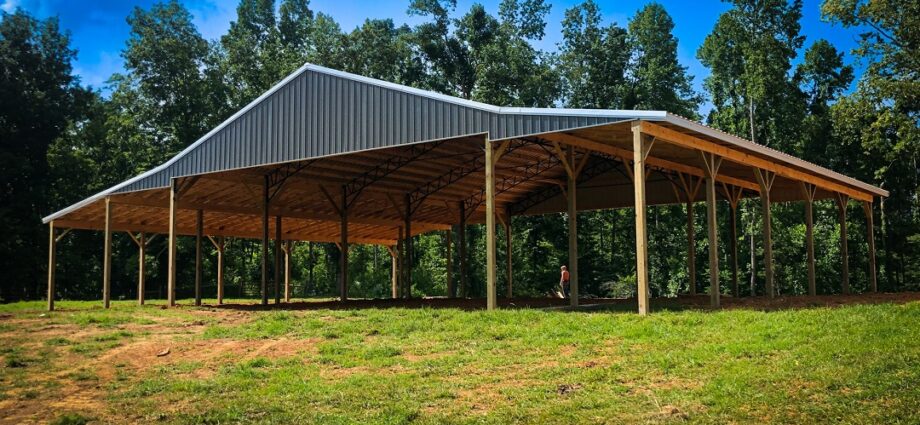When it comes to insulating a pole barn, the type of insulation you choose can significantly impact its effectiveness, durability, and cost. Here are some common types of insulation suitable for pole barns, along with their features and considerations.
Fiberglass Batt Insulation:
Fiberglass batt insulation is one of the most popular choices for pole barns due to its affordability and ease of installation. It consists of pre-cut batts or rolls made of glass fibers and is typically installed between the framing studs. Fiberglass insulation provides decent thermal resistance and can help regulate indoor temperatures.
Blown-In Cellulose Insulation:
Made from recycled paper fibers treated with fire-retardant chemicals, blown-in cellulose insulation is an eco-friendly option for insulating pole barns. It’s installed by blowing loose-fill cellulose into wall and ceiling cavities, creating a dense layer of insulation that effectively blocks heat transfer.
Spray Foam Insulation:
Spray foam insulation offers excellent thermal performance and air sealing capabilities, making it an ideal choice for pole barns seeking superior energy efficiency. It expands upon application to fill gaps and voids, creating an airtight seal that prevents drafts and heat loss. While spray foam insulation tends to be more expensive upfront, it can provide long-term savings on energy costs.
Reflective Foil Insulation:
Reflective foil insulation, also known as radiant barrier insulation, consists of layers of aluminum foil laminated to bubble wrap or foam. It reflects radiant heat away from the building, helping to keep interior spaces cooler in hot climates. Reflective foil insulation is often used in conjunction with other insulation materials to enhance thermal performance.
Rigid Foam Insulation:
Rigid foam insulation boards are lightweight and easy to install, making them a popular choice for pole barns. They provide high levels of thermal resistance and moisture resistance, helping to maintain comfortable indoor temperatures and prevent condensation buildup. Rigid foam insulation can be installed on walls, ceilings, and under the roof.
Natural Fiber Insulation:
For those seeking environmentally friendly options, natural fiber insulation made from materials such as cotton, wool, or hemp can be a sustainable choice. While natural fiber insulation may be slightly more expensive than traditional options, it offers excellent thermal performance and moisture-wicking properties.
When choosing insulation for your pole barn, consider factors such as climate, budget, installation method, and desired level of thermal performance. Consulting with a professional insulation contractor can help you determine the best insulation type and installation approach for your specific needs.
FAQs (Frequently Asked Questions)
1. How do I know which type of insulation is best for my pole barn?
The best type of insulation for your pole barn depends on various factors, including your budget, climate conditions, and specific insulation requirements. Consulting with a professional insulation contractor can help you assess your needs and choose the most suitable insulation option.
2. Can I install insulation in an existing pole barn?
Yes, insulation can be installed in existing pole barns by retrofitting insulation materials between the framing studs or by adding insulation to the interior walls and ceiling. However, it’s essential to ensure proper ventilation and moisture control to prevent issues such as mold and mildew growth.
3. How do I calculate the amount of insulation needed for my pole barn?
The amount of insulation needed depends on factors such as the size of the pole barn, local climate conditions, and desired R-value (thermal resistance). A professional insulation contractor can perform an energy audit and recommend the appropriate insulation thickness and coverage area based on your specific requirements.
4. Can I use multiple types of insulation in my pole barn?
Yes, it’s possible to use a combination of insulation types to achieve optimal thermal performance. For example, you can use fiberglass batt insulation between the framing studs. And spray foam insulation in hard-to-reach areas or gaps for enhanced energy efficiency.
5. Will insulating my pole barn help reduce heating and cooling costs?
Yes, properly insulating your pole barn can significantly reduce heating. And cooling costs by minimizing heat transfer through the building envelope. Insulation helps maintain consistent indoor temperatures, reducing the workload on HVAC systems and improving energy efficiency.












